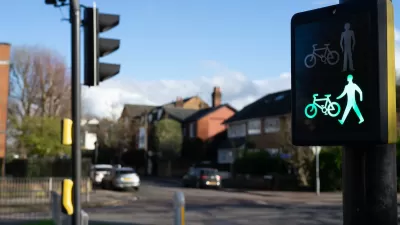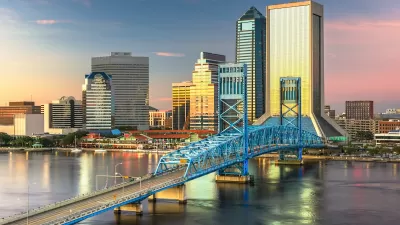A recent study emphasizes the importance of good road design and low speed limits in keeping pedestrians safe.

A new study of traffic deaths in Tennessee found a strong correlation between more pedestrian deaths and more crashes on “straight, multi-lane roads with speed limits over 35 miles per hour,” known as ‘stroads,’ that advocates say “combine the features of neighborhood streets with a car-oriented roads to deadly effect.” Kea Wilson describes the study in Streetsblog USA.
The study’s authors acknowledge that the size of vehicles can also be a factor in how deadly crashes are, “But the more important thing that we should be focusing on — and it's something that urban transportation professionals have a lot more control over — is speed on urban arterials.”
The study notes that Tennessee did not necessarily build more arterials during the time span that pedestrian deaths rose, but study author Christopher Cherry “suspects that a rising number of residents simply have no choice but to walk on the state's most-dangerous roads, particularly as incomes fall and poor residents who can't afford cars are pushed out of walkable downtowns and towards the sprawling fringe.” In other words, the suburbanization of poverty is putting more low-income people in harm’s way.
For Cherry, road design is a crucial key to improving safety. “We need to design roads where it’s almost impossible to kill someone.”
FULL STORY: Study: Yes, SUVs Are Deadlier Than Cars — But on Fast Arterials, Pedestrians Die No Matter What

Study: Maui’s Plan to Convert Vacation Rentals to Long-Term Housing Could Cause Nearly $1 Billion Economic Loss
The plan would reduce visitor accommodation by 25,% resulting in 1,900 jobs lost.

North Texas Transit Leaders Tout Benefits of TOD for Growing Region
At a summit focused on transit-oriented development, policymakers discussed how North Texas’ expanded light rail system can serve as a tool for economic growth.

Why Should We Subsidize Public Transportation?
Many public transit agencies face financial stress due to rising costs, declining fare revenue, and declining subsidies. Transit advocates must provide a strong business case for increasing public transit funding.

How to Make US Trains Faster
Changes to boarding platforms and a switch to electric trains could improve U.S. passenger rail service without the added cost of high-speed rail.

Columbia’s Revitalized ‘Loop’ Is a Hub for Local Entrepreneurs
A focus on small businesses is helping a commercial corridor in Columbia, Missouri thrive.

Invasive Insect Threatens Minnesota’s Ash Forests
The Emerald Ash Borer is a rapidly spreading invasive pest threatening Minnesota’s ash trees, and homeowners are encouraged to plant diverse replacement species, avoid moving ash firewood, and monitor for signs of infestation.
Urban Design for Planners 1: Software Tools
This six-course series explores essential urban design concepts using open source software and equips planners with the tools they need to participate fully in the urban design process.
Planning for Universal Design
Learn the tools for implementing Universal Design in planning regulations.
City of Santa Clarita
Ascent Environmental
Institute for Housing and Urban Development Studies (IHS)
City of Grandview
Harvard GSD Executive Education
Toledo-Lucas County Plan Commissions
Salt Lake City
NYU Wagner Graduate School of Public Service





























